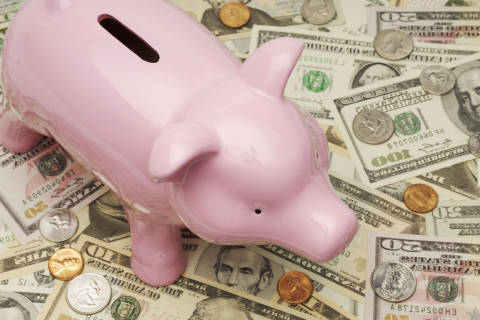It can be depressing when you’re on the bottom rung of the credit ladder, but it doesn’t have to stay that way.
You can increase your bad credit score if you use the right techniques and you’re persistent. And I promise it won’t take the rest of your life to build a solid credit score, either. So let’s get started.
Here’s what you’ll learn just ahead:
— What you need to know about FICO scores.
— What you need to know about VantageScores.
What Is Bad Credit?
Here’s a broad definition: A consumer who has bad credit, also referred to as poor credit, has a FICO score of 579 or less. With a bad credit score, you might only be approved for credit cards, mortgages or personal loans that come with high interest rates.
In fact, if your score is way less than 579, there’s a chance you can’t get approved for credit at all. But consider this a temporary problem. Once you start working on your score, your ability to get credit will improve.
Understanding how credit scores work can help you make better credit decisions. There are two credit scores that are used most often by lenders: FICO scores and VantageScores. FICO also has score versions for different industries.
About 90% of lenders use a version of the FICO score to help determine an applicant’s creditworthiness. FICO Score 8 seems to be the version used most often, but there’s also a new version called FICO Score 9. It takes lenders a long time to use a new score, so that’s why FICO Score 8 is still so popular.
[Read: Best Credit Cards for Bad Credit.]
What You Need to Know About FICO Scores
FICO scores range from 300 to 850. According to myFICO.com, these are the values for each credit score range:
— Exceptional: 800 and higher.
— Very good: 740 to 799.
— Good: 670 to 739.
— Fair: 580 to 669.
— Poor: 579 and lower.
The average FICO score as of October 2020 is 711, which qualifies as good credit. It might seem impossible right now, but possessing good credit will be within reach after you spend time rebuilding your credit.
Let’s take a look at the factors that make up the FICO score:
— Payment history: 35%.
— Amounts owed: 30%.
— Length of credit history: 15%.
— New credit: 10%.
— Credit mix: 10%.
If you have a poor credit score, it means that lenders think you have a high risk of delinquency. In fact, about 61% of consumers with credit scores below 580 are likely to become delinquent on a credit-related account, FICO says. So this is why it’s difficult to get approved for credit without having to pay high interest rates.
[Read: Best Secured Credit Cards.]
What You Need to Know About VantageScores
VantageScore ranges from 300 to 850, just like the FICO score does. But since VantageScore weighs the options a little differently, a 700 FICO score can’t be directly compared with a 700 VantageScore. Plus, FICO scores have different ranges for each credit rating.
Here are the VantageScore ranges:
— Excellent: 750 to 850.
— Good: 700 to 749.
— Fair: 650 to 699.
— Poor: 550 to 649.
— Very poor: 300 to 549.
As you can see, there are two categories that could be considered a bad score. With VantageScore, poor credit is from 550 to 649. And very poor credit is less than 550. You’ll need a score of 650 to climb into the fair credit range.
Rather than using percentages like FICO does, VantageScore focuses on how influential each factor is in the algorithm. Factors that make up the VantageScore include:
— Available credit, balances and credit utilization: extremely influential.
— Credit mix and experience: highly influential.
— Payment history: moderately influential.
— Age of credit history and new accounts: less influential.
How to Improve Bad Credit
Now that you know more about how credit scores work, you’re ready to start improving your credit score. Your short-term goal is to move up into fair credit, which for FICO is 580.
Your long-term goal? To get the lowest interest rates, you’ll need a FICO score of at least 760, which puts you in the very good FICO score range. This won’t happen right away, of course, but it’s a possibility if you use the right strategies.
Here are four strategies for improving a bad credit score:
— Set up a budget and track spending.
— Pay down credit card balances.
Set up budget and track spending. If you don’t have a budget, you need to set one up today. Once you remedy that situation, you also need to track your spending, which is easy to do with an app or online money management tools.
It’s difficult to stay on budget if you don’t know how much you spent and where you spent it. Getting into debt or increasing the debt you already have could make your credit score even worse. So think of this as your financial foundation. A strong foundation helps you build good credit.
[Read: Best Starter Credit Cards.]
Get a secured credit card. With a bad credit score, you’ll have a hard time getting approved for a decent credit card. Before you decide to get an unsecured credit card with a high annual percentage rate and monthly maintenance fees, take a look at secured credit cards.
You will have to put down a deposit to secure the credit card. But you’ll get a regular-looking credit card to use for purchases. These cards are listed on your credit report as a revolving credit account, and as long as your issuer reports your payment history to the credit bureaus, you’ll build a better credit score. That is, as long as you use the card responsibly.
Get a credit-builder loan. Many people aren’t aware that this option exists. You can check with your local bank or a credit union to see if credit-builder loans are offered. Every institution has its own set of rules and rates for credit-builder loans, but in general, you’ll deposit a small amount, such as $1,000, in the bank or credit union.
You then pay the “loan” back in monthly payments. This type of loan is identified as an installment loan by the FICO score algorithm, so that also gives you a small boost in the “mix of credit” category.
Pay down credit card balances. You have a credit utilization ratio, which is the amount of credit used compared with the amount of credit available. If you are carrying balances on your credit cards from month to month, your ratio could be high.
A ratio that exceeds 30% can drag down your credit score. As you pay down debt, your credit score will start to rise. As already noted, available credit is 30% of your credit score. To get the biggest positive impact on your score, keep your balances less than 10%.
Make it a priority in your life to improve your credit, and over time, you’ll see the results of your hard work.
More from U.S. News
How to Create and Maintain a Family Budget
What Is a Bad Credit Score? originally appeared on usnews.com







